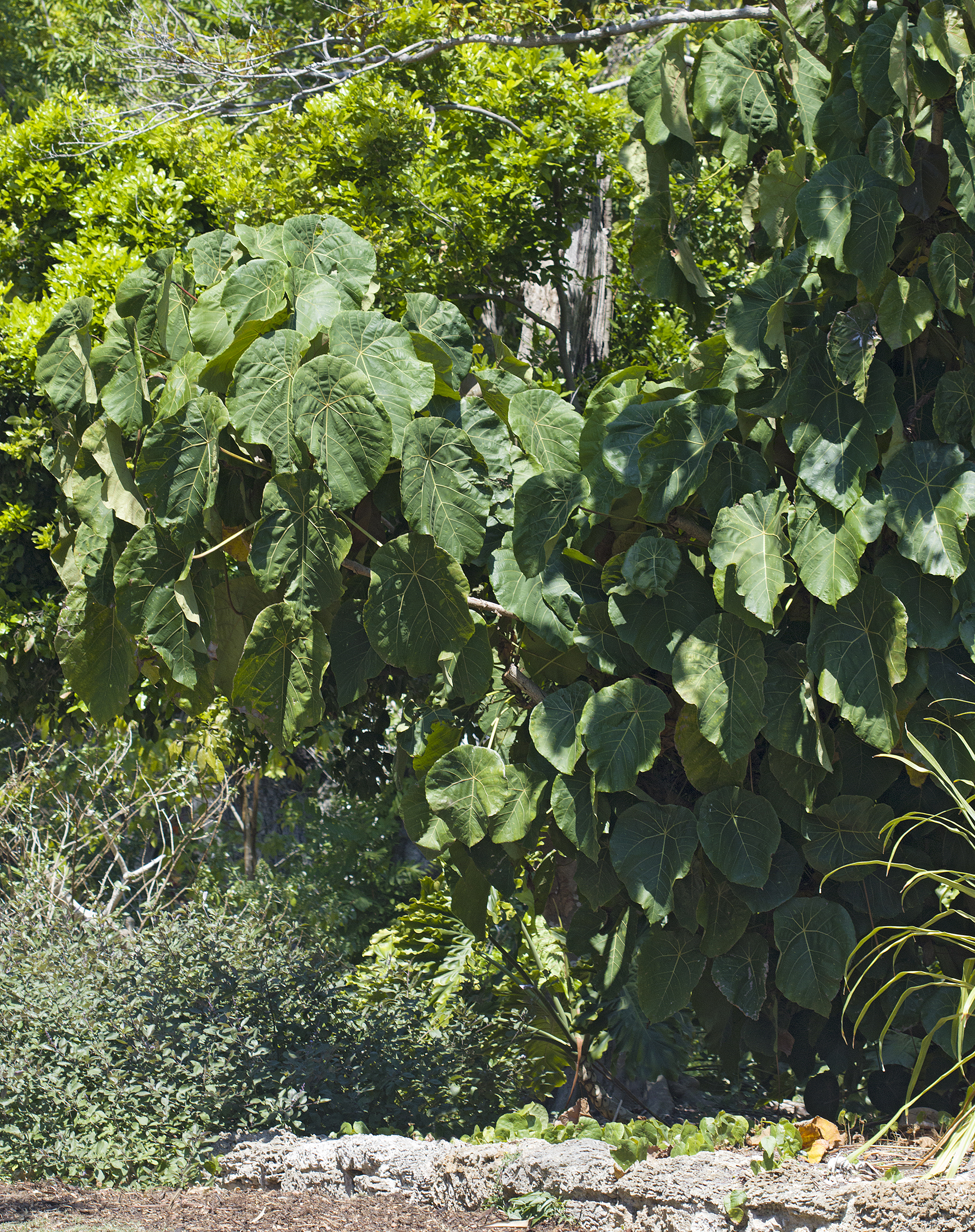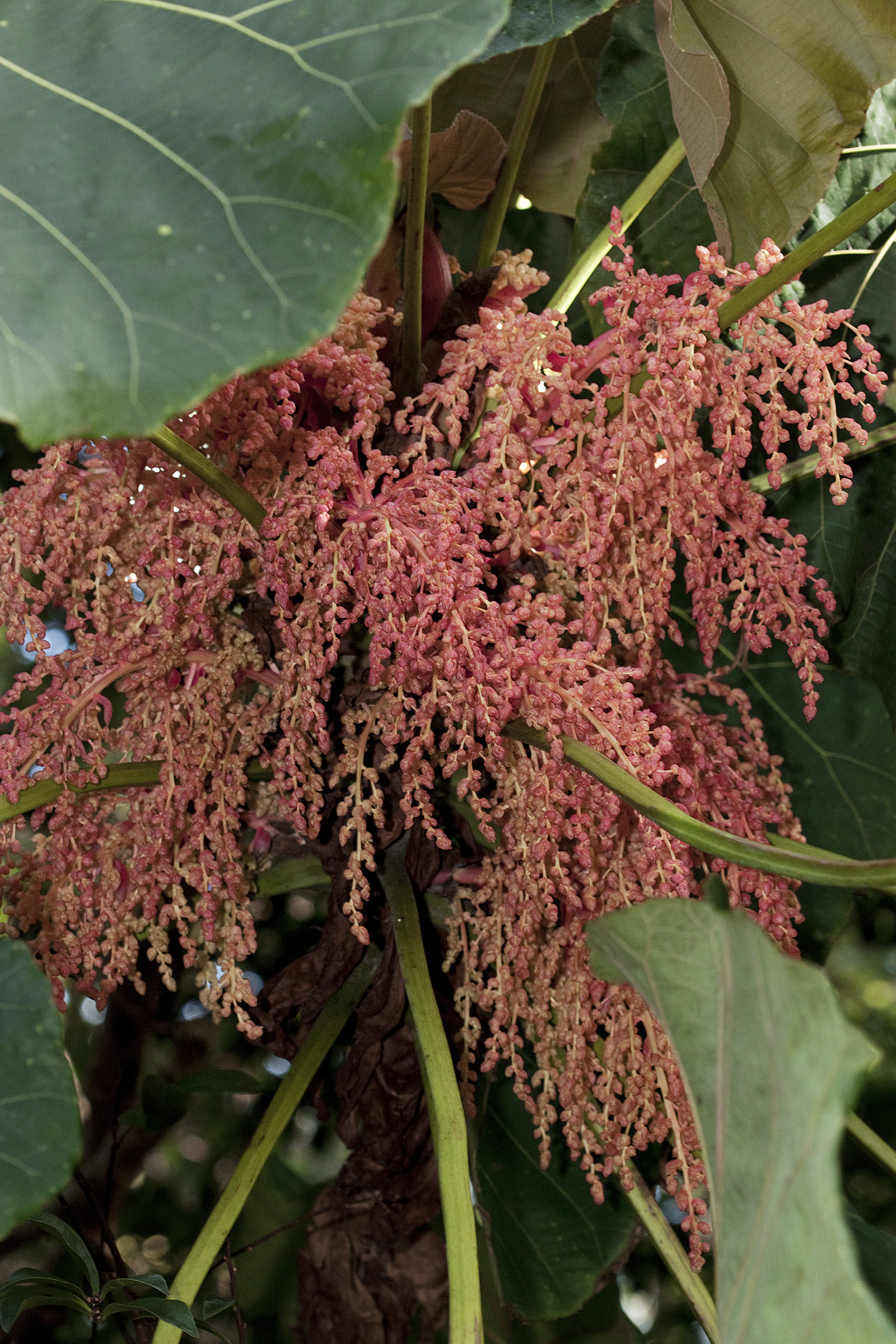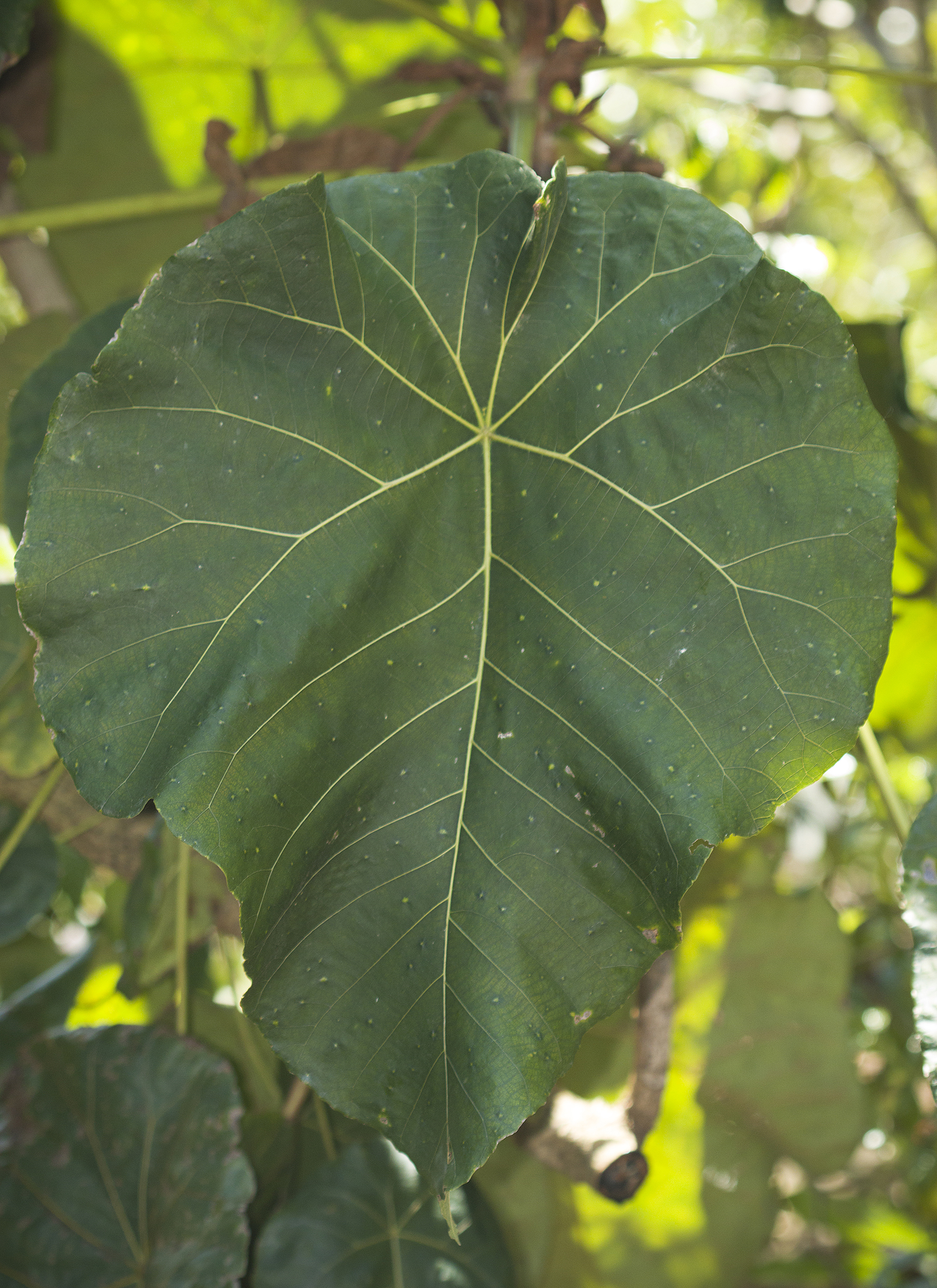Coral tree brings the tropics to the backyard

BY KENNETH SETZER
Fairchild Tropical Botanic Garden
As published in the Miami Herald, April 6, 2018
The coral tree makes a bold, tropical statement without too much maintenance.

Coral tree, modest in height
In perusing the list of plants available for our upcoming Spring Plant Sale, I’ll admit to a bit of selfishness; I want to see what treasures I can get once the sale begins. But I promise, we don’t get them in advance—Garden guests have priority. But once the sale is open, I’m eager to give green to get green in return.
This year, there are staples like firebush, rare natives like pearlberry, and rather hard-to-find cycads like Encephalartos hildebrandtii. One plant in particular on offer is the coral tree, Macaranga grandifolia. Once you hear the genus, Macaranga, you won’t easily forget it. Just think of macaroni and a certain annoying song from the 90s.
Coral tree is native to the Philippines, and though a tropical plant, does quite well in our subtropics. Fairchild’s are all grown outdoors, which to me is a good sign of its suitability for Florida gardens.
Even better, it’s fine to keep in a pot for years. Even in the ground it only reaches 12 to 20 feet tall, so can be maintained as a small tree. Its water requirements are considered “moderate,” so it’s not for xeric landscapes, but once established in your landscape it should only get thirsty during drought or dry spells in winter. Otherwise, summer rains provide sufficient water.
Now, what makes it so stunning. First, the foliage: leaves are huge at a couple feet across, and peltate, so they connect to the stem (the petiole) from underneath like a giant lily pad or nasturtium. They come to a point, with a classic tropical “drip tip,” and the leaf surface has a slightly pebbled texture. A peek underneath reveals pink-red leaf veins. Beneath their benevolent shade is an excellent place for tender understory plants, and I picture that a cacao tree would thrive in the shady protection from cold spells and wind.

Coral flowers cascade throughout the year
The huge leaves physically stand out from the trunk with petioles, i.e. leaf stems, up to two feet long! They seem to be saving space for the best part, the flowers. Oh yes, the coral part, that comes from the incredible cluster of tightly packed coral red flowers: dense, hanging, pendulous showers of flowers that bloom nearly year round.
Coral tree is now apparently a common invasive in Hawaii, where it was originally introduced to restore degraded areas because of its fast growth. Hawaiian native flora has lots of invasive competition, and coral tree has proven to be a problem. Studies call it Macaranga mappa, which seems to be a synonym for M. grandifolia.
The coral tree is in the euphorbia family, and while the genus name Macaranga may remind you of an irritating song, the one thing irritating about it can be its latex, like other members of the Euphorbia family. When pruning, avoid getting the milky-looking latex on your skin and keep it out of your eyes! But don’t let this put you off. Even common poinsettias contain similar latex.

Leaves can attain two feet or more
One coral tree at Fairchild was planted in 2007, and seems fairly well behaved, having survived the hurricane with initially just some ragged leaves. I think our cool spells won’t let the coral tree ever get out of hand. Come see it in the Garden and at Fairchild’s Spring Plant Sale, April 14 and 15.
